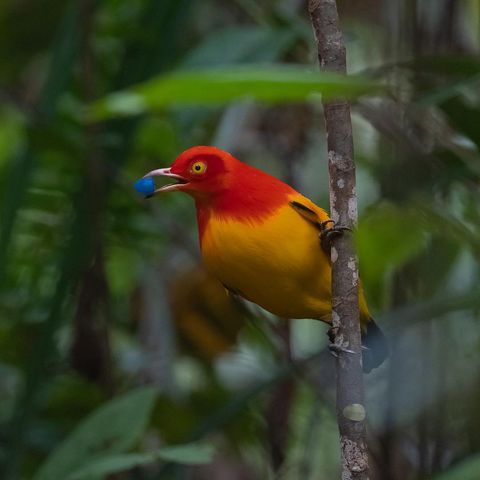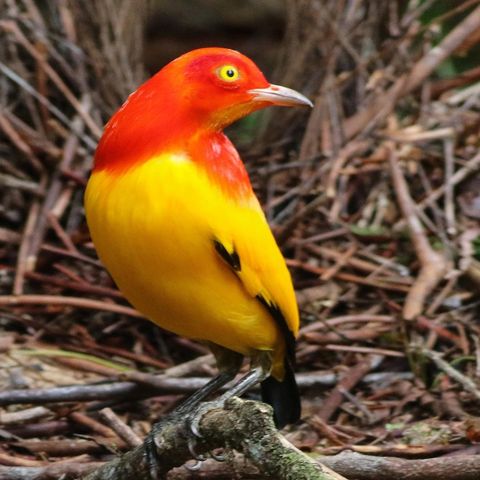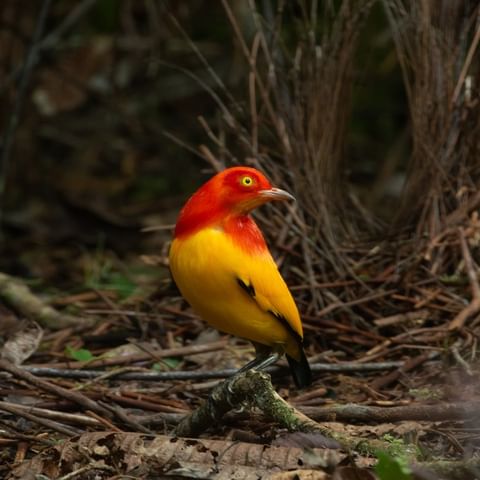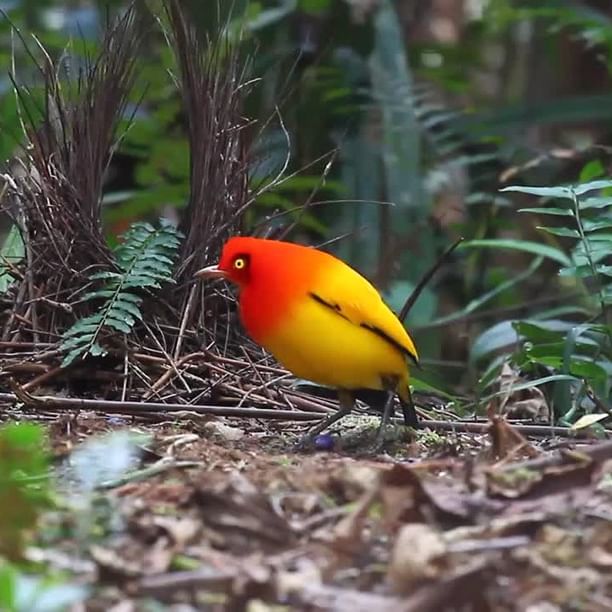Males are renowned for building complex bowers from which they try to entice prospective mates by doing displays.
A bird immediately recognized by its riot of sunset colors, with its crimson top immediately bleeding into a belly colored a vibrant orange, set off by wings dipped into an inky black and equally hypnotic eyes.
Meet the Flame bowerbird

One of the most brilliantly colored bowerbirds, the male is colored a striking almost crimson orange on his back which blends into a bright yellow belly, black wings, and tail with a yellow tip.

The female is not as brilliantly colored as the male and is more of an olive-brown bird with a yellow around her belly,

This species is native to and distributed throughout the rainforests of Papua New Guinea.

Little is known about the diet of the Flame bowerbird, other than they forage for fruit and insects.
A post shaed by birds.nature (@birds.nature)
Male bowerbirds are renowned for building complex bowers from which they try to entice prospective mates by doing elaborate displays.
Related Reading:
–Dressed in a suit of iridescent sheens, its song is as almost as stunning as the way they look!
Female bowerbirds watch various displays and inspect each bower before selecting a mate. She then builds a nest from soft materials such as leaves, ferns, and vine tendrils. She then lays 1 egg which takes anywhere from 19 – 24 days to hatch.
A post shared by Discover PNG (@discoverpng)
Bowerbird species as a whole enjoy living in a range of habitats including rainforest, eucalyptus, and acacia forest, and shrublands.
A post shared by Birding Tropics (@birdingtropicstv)
The flame bowerbird is evaluated as least concern on the IUCN Red List of Threatened Species.
Watch the grand display of the Flame bowerbird right here below:
Despite Their Extreme Shyness, These Rainbow-Colored Birds Don’t Just Stand Out, They Outright Pop!
Please SHARE this article with all your bird-loving friends and family.





